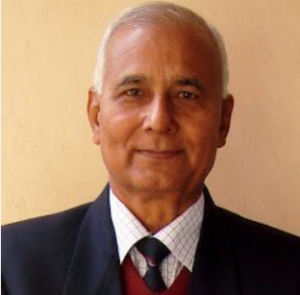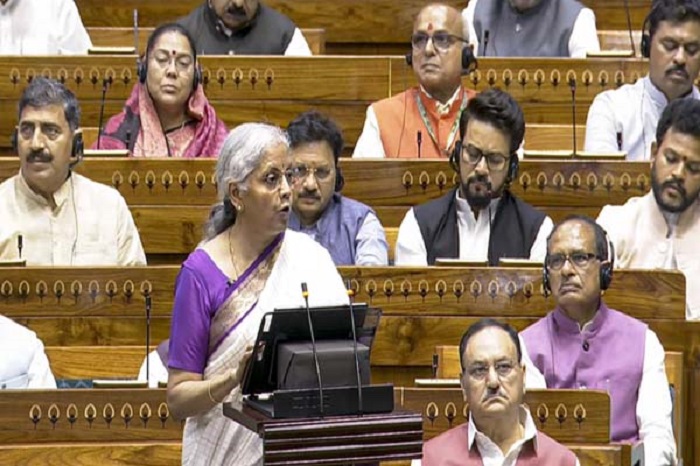Dinkar Kapoor, State General Secretary, All India People’s Front, Uttar Pradesh.
(Translation from original Hindi to English, SR Darapuri, National President, All India Peoples Front)

(Asian independent) While presenting the Union Budget 2025-26, Finance and Corporate Affairs Minister Nirmala Sitharaman began her speech with the famous quote of Telugu poet and playwright Gurajada Appa Rao, ‘A country is not just its soil, a country is its people’. She focused on the poor, youth, farmers and women in the budget goals. She announced that her budget is to achieve zero poverty in the country, 100 percent good quality school education, quality affordable and comprehensive health care, meaningful employment for 100 percent skilled workers, 70 percent women’s participation in economic activities, prosperous farmers, etc. In this light, if we observe the budget allocation for the welfare of Scheduled Castes declared in the budget draft 10A, it will appear far from the declared goal.
According to the 2011 census, 16.6 percent of the Scheduled Caste population lives in the country, the majority of which is poor. For a long time, the forces fighting for the rights of this community have been demanding allocation of Scheduled Caste welfare budget in accordance with their population. But this has been completely ignored in this budget as well and only 3.4 percent of the budget has been allocated for them. In this too, most of the money has been given to corporate houses.
The matter of making special provision in the budget for the education of Scheduled Castes was put forward in the Poona Pact itself, in clause 9 of which it was assured that special provision would be made in the budget for the education of Scheduled Castes which were considered minority as described in the Government of India Scheduled Caste Order 1936 issued under the Government of India Act 1935. In the book ‘States and Minorities’ written by Dr. Bhimrao Ambedkar, in which his views were presented in the Constituent Assembly on behalf of the All India Scheduled Castes Federation, he has said that it is the responsibility of the state to remove social, political and economic inequality by providing better opportunities to the deprived sections. In its Article 2, he talks about the share in the budget for the Scheduled Castes and in its Section 3, Clause 4, he talks about spending money for any purpose related to the Government of India. He cites that this provision was made in Section 10 of the Government of India Act 1935. He also mentions special responsibility for the Scheduled Castes and considers education to be the responsibility of the state.
But after independence, this dream of Dr. Ambedkar could not be fulfilled. In the fifth five-year plan in 1974-75, it was accepted as Scheduled Caste/Scheduled Tribes Sub Plan. In 2017, the Modi government changed its name to Scheduled Caste Welfare Item. In this sub plan or welfare scheme, the goal was declared to promote the income and employment of the Scheduled Castes for their social empowerment, educational development and economic empowerment. It was clearly stated that the money will be spent on their income increasing schemes, skill development and infrastructure development. It was even said that it is mandatory to spend 10 percent of the sub plan budget on skill development. If we look at the budget for 2025-26, a budget of Rs 1,68,478.38 crore has been allocated for the Scheduled Castes, which is slightly more than the Rs 1,65,500.05 crore allocated last time and if 5 percent inflation is taken into account, then it has been reduced in a way. It is also worth noting that out of the allocated amount in the last financial year, only Rs 1,38,362.52 crores has been spent.
The Modi government is very adept at making new announcements. Before this budget, the Prime Minister himself was announcing to make India a big market of skilled workers and supply skilled workers abroad. But if we see, the condition of the SC sub-plan budget of the major institutes of skill development is bad. In the SC budget of a renowned institutes like IIT, the amount of Rs 631.60 crore allocated last year has been increased by Rs 50 crore only. The amount given to IIT Hyderabad, which was spent as Rs 48.54 crore in 2023-24, has been reduced to zero this time. The Rs 20.63 crore allocated to a premier institute like the Indian Institute of Management in 2023-24 has been reduced to Rs 15.44 crore this time. The Rs 103.79 crore allocated to the Indian Institute of Science Education and Research last year has been reduced to Rs 94.73 crore. The budget of the Scheme for Promotion of Academic and Research Collaboration has been reduced from Rs 18 crore to Rs 9 crore. The budget of the National Institute of Technology has been reduced from Rs 456.45 crore allocated last year to Rs 398.12. Today, there is talk of the era of AI. The Government of India has reduced the Rs 42 crore allocated last year to the Centres of Artificial Intelligence for SC to Rs 32.94 crore. Rs 15 crore has been cut in the budget of Skill India program and only Rs 384.69 crore has been spent last year. This time Rs 853.68 crore has been allocated for skill development and entrepreneurship. The truth is that out of Rs 612.65 crore last time, only Rs 477.94 crore has been spent.
There has been a slight increase in the budget of Rs 18,436.16 crore allocated for the education of Scheduled Castes last time, this time Rs 19,653.99 crore has been allocated. Which is very less in proportion to their population. Similarly, Rs 10,094.17 crore has been allocated in the health budget, which is slightly more than the Rs 9,158.5 crore allocated last year. Here it must be kept in mind that out of the money allocated last year, the government was able to spend Rs 8927.18 crore only. For health infrastructure, the government had spent Rs 1,933.47 crore in the financial year 2023-24, whereas this year only Rs 1,521.88 crore has been allocated.
The government has considered agriculture as the first growth engine of the country in the budget. A huge cut of about Rs 1,000 crore has been made in the Pradhan Mantri Fasal Bima Yojana, the main item of expenditure in agriculture for Scheduled Castes. There has been a cut of Rs 300 crore in Krishi Unnati Yojana, Rs 2 crore in Natural Resource Management, Rs 4 crore in Krishi Vigyan Kendra and Rs 40 crore in Urea subsidy. The government has considered the MSME sector as the second growth engine. Rs 3,838.51 crore has been allocated in its budget for SC, which is slightly more than the last allocated budget of Rs 3,630.30 crore and the actual expenditure in 2023-24 is around Rs 3,737.95 crore. Rs 150 crore has been cut in the budget allocated for counter guarantee of MSME. The PM Vishwakarma Yojana, which was run with great fanfare, in which there was talk of making workers skilled and giving loans, has been cut by about Rs 150 crore. In the major employment providing scheme MNREGA, this time only Rs 11976 crore has been allocated for Scheduled Castes as compared to the actual expenditure of Rs 12,712.249 crore in 2023-24. The Pradhan Mantri Awas Yojana, about which a lot is talked about, has been allocated only Rs 11,911 crore by reducing the allocation from Rs 12,946.33 crore last year. The watershed program of the Pradhan Mantri Krishi Sinchai Yojana has been cut by Rs 50 crore.
The budget of the clean water and toilet construction for the respectable life of the Scheduled Castes has also been cut by Rs 6,600 crore. There is no increase in the budget of the Labor Welfare Scheme. The Pradhan Mantri Shram Yogi Maandhan Yojana, which gives pension to unorganized workers, in which the government will deposit an amount equal to the worker’s contribution in the bank, has been cut by Rs 5 crore and only Rs 25 crore has been allocated. The budget of the Atmanirbhar Bharat Rojgar Yojana has been made zero this time, whereas the actual expenditure on it in 2023-24 was Rs 209 crore. Rs 3,340 crore has been allocated on the scheme to create new employment. Last time, Rs 1,660 crore was allocated for this scheme, out of which only Rs 1,140 crore was spent. This time Rs 4,317.85 crore has been allocated for housing and dignified life in urban areas, which is very little more than the amount of Rs 4,283.26 allocated last year. It should also be noted that out of the last allocated amount, only Rs 1,959.40 crore could be spent. Not even a rupee has been increased in the old age and widow pension for the Scheduled Castes.
The Ujjwala scheme, which was started by the Modi government in its initial phase, that is, the scheme of giving free LPG gas connections to the poor, has died in this budget. Zero budget has been allocated for the LPG connections given to the poor families of the Scheduled Castes and the budget for LPG direct benefit has also been made zero. On the other hand, if we see, the sub-plan money has been spent on many such items for corporate houses which have no relation with the Scheduled Castes. For corporate profits, the new and renewable energy item has been increased by Rs 900 crore, the power sector has been increased by Rs 1500 crore, the PM Surya Ghar Free Electricity Scheme has been increased by Rs 730 crore. The budget for making semiconductors for computers, which has no relation with the development of scheduled castes, has been increased by Rs 260 crore. The budget for IT hardware linked incentives has been increased by Rs 300 crore. The budget of Electronics and Information Technology, which is dominated by Ambani, has been increased by Rs 700 crore.
Overall, this budget is an attack on the economic and social empowerment of Scheduled Castes by the Modi government. A new mobilization has started in the entire Uttar Pradesh through Dalit Ekta Manch to increase the budget in all plans for education, health, employment, skill development, economic and social empowerment of Dalits, which will create a new awakening of Dalits in the coming times.








